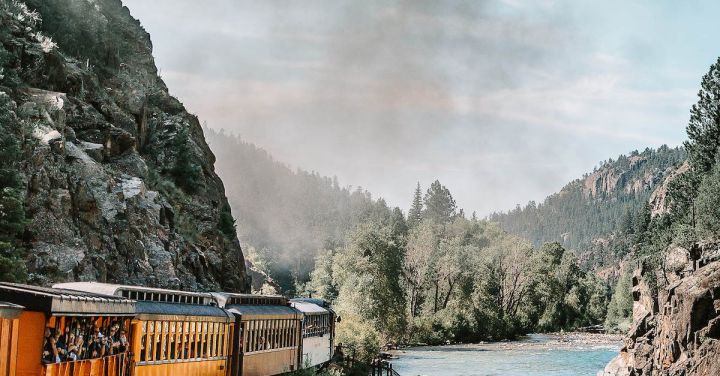Trains have long held a special place in the hearts of filmmakers, serving as both a literal and metaphorical means of transportation. From the early days of silent cinema to the present, the silver screen has been infatuated with the power and allure of trains.
One of the earliest examples of trains in film can be found in the iconic 1903 short film, “The Great Train Robbery.” Directed by Edwin S. Porter, this groundbreaking film showcased the excitement and danger of a train heist, setting the stage for the many train-centric films to come.
Trains quickly became a symbol of progress and modernity in the early 20th century, and filmmakers were quick to capitalize on this fascination. In films such as “The General” (1926), directed by Buster Keaton, and “The Iron Horse” (1924), directed by John Ford, trains took on a central role in the narrative, representing the triumph of technology and the unstoppable march of civilization.
But trains were not just symbols of progress; they also represented escape and freedom. In Alfred Hitchcock’s classic thriller “North by Northwest” (1959), the protagonist is pursued by a mysterious group of spies, with a tense and iconic climax taking place on the roof of a speeding train. The train here serves as a metaphor for the protagonist’s desire to break free from the constraints of his mundane life.
Trains also provided a backdrop for romance and longing. In the romantic drama “Brief Encounter” (1945), directed by David Lean, a chance encounter between two strangers at a train station leads to a passionate but ultimately doomed affair. The train station becomes a symbol of missed opportunities and the fleeting nature of love.
As the years went by, trains continued to captivate filmmakers and audiences alike. In the action-packed thriller “Speed” (1994), a bomb is placed on a city bus that will explode if the bus drops below a certain speed. The tension and excitement of the film are heightened by the constant movement and momentum of the bus, echoing the adrenaline rush of a speeding train.
More recently, trains have found a place in the realm of fantasy and science fiction. In the “Harry Potter” series, the Hogwarts Express transports young wizards and witches to the magical world of Hogwarts School of Witchcraft and Wizardry. The train here acts as a portal to a fantastical world, capturing the imagination of both the characters and the audience.
In addition to their narrative significance, trains also offer filmmakers a visually striking and dynamic setting. The long, narrow corridors, the rhythmic movement of the train, and the changing landscapes outside the windows all contribute to the cinematic experience. From the steam-powered locomotives of the past to the sleek, high-speed trains of the present, trains provide a visually captivating backdrop for storytelling.
In conclusion, the silver screen’s infatuation with trains is a testament to their enduring appeal as both a symbol and a setting. Whether representing progress, escape, romance, or adventure, trains continue to capture the imagination of filmmakers and audiences alike. From the early days of cinema to the present, trains have played a significant role in shaping the language of film, and their fascination shows no signs of slowing down.
